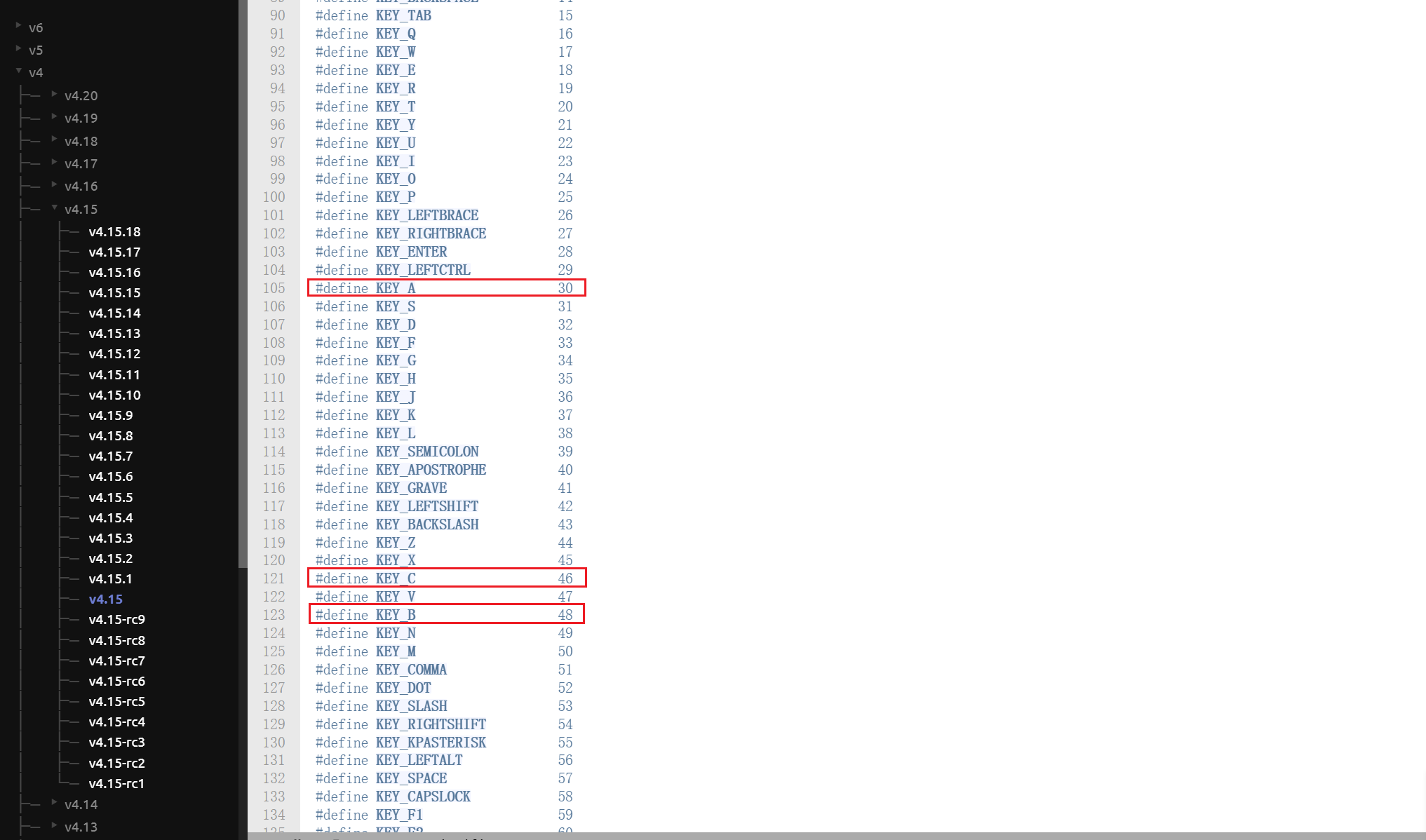LV17-01-输入类设备-02-按键应用开发实例
本文主要是输入类设备控制——按键应用开发实例的相关笔记,若笔记中有错误或者不合适的地方,欢迎批评指正😃。
点击查看使用工具及版本
| PC端开发环境 | Windows | Windows11 |
| Ubuntu | Ubuntu20.04.2的64位版本 | |
| VMware® Workstation 17 Pro | 17.6.0 build-24238078 | |
| 终端软件 | MobaXterm(Professional Edition v23.0 Build 5042 (license)) | |
| Win32DiskImager | Win32DiskImager v1.0 | |
| Linux开发板环境 | Linux开发板 | 正点原子 i.MX6ULL Linux 阿尔法开发板 |
| uboot | NXP官方提供的uboot,NXP提供的版本为uboot-imx-rel_imx_4.1.15_2.1.0_ga(使用的uboot版本为U-Boot 2016.03) | |
| linux内核 | linux-4.15(NXP官方提供) |
点击查看本文参考资料
| 分类 | 网址 | 说明 |
| 官方网站 | https://www.arm.com/ | ARM官方网站,在这里我们可以找到Cotex-Mx以及ARMVx的一些文档 |
| https://www.nxp.com.cn/ | NXP官方网站 | |
| https://www.nxpic.org.cn/ | NXP 官方社区 | |
| https://u-boot.readthedocs.io/en/latest/ | u-boot官网 | |
| https://www.kernel.org/ | linux内核官网 | |
| 其他网站 | kernel - Linux source code (v4.15) - Bootlin | linux内核源码在线查看 |
点击查看相关文件下载
| 分类 | 网址 | 说明 |
| NXP | https://github.com/nxp-imx | NXP imx开发资源GitHub组织,里边会有u-boot和linux内核的仓库 |
| https://elixir.bootlin.com/linux/latest/source | 在线阅读linux kernel源码 | |
| nxp-imx/linux-imx/releases/tag/rel_imx_4.1.15_2.1.0_ga | NXP linux内核仓库tags中的rel_imx_4.1.15_2.1.0_ga | |
| nxp-imx/uboot-imx/releases/tag/rel_imx_4.1.15_2.1.0_ga | NXP u-boot仓库tags中的rel_imx_4.1.15_2.1.0_ga | |
| I.MX6ULL | i.MX 6ULL Applications Processors for Industrial Products | I.MX6ULL 芯片手册(datasheet,可以在线查看) |
| i.MX 6ULL Applications ProcessorReference Manual | I.MX6ULL 参考手册(下载后才能查看,需要登录NXP官网) |
一、功能分析
这一部分,我们编写一个应用程序,获取按键状态, 判断按键当前是按下、松开或长按状态。从上一节笔记中的打印信息可知,对于按键来说,它的事件上报流程如下所示(以字母 A 键为例):
(1)KEY_A :上报 KEY_A 事件
(2)SYN_REPORT :同步
如果是按下,则上报 KEY_A 事件时, value=1;如果是松开,则 value=0;如果是长按,则 value=2。
二、代码实例
1 |
|
在循环中,调用 read()读取输入设备上报的数据, 当按键按下或松开(以及长按)动作发生时, read()会读取到输入设备上报的数据,首先判断此次上报的事件是否是按键类事件(EV_KEY),如果是按键类事件、 接着根据 value 值来判断按键当前的状态是松开、按下还是长按。
三、开发板测试
1. 开发板自带的按键

运行程序之后,按下 KEY0 或松开 KEY0 以及长按情况下,终端会打印出相应的信息,code=114(KEY_VOLUMEDOWN 按键)。
2. 电脑键盘
正点原子出厂系统带有各种驱动,支持键盘的识别,连接到开发板的 USB HOST 接口上,当键盘插入之后,终端将会打印出相应的驱动加载信息:

驱动加载成功之后,可以查看下该键盘设备对应的设备节点,使用命令”cat /proc/bus/input/devices”,在打印信息中找到键盘设备的信息:

可以看到我插入的无线键盘名字为Compx 2.4G Receiver,其实没搞懂我这个无线USB键盘怎么还有个鼠标的信息,不过这里我们只是用键盘,用上面的/dev/input/event3 这个节点即可,我们运行刚才的测试程序,然后按下键盘上不同的按键:

我们可以通过 input-event-codes.h - include/uapi/linux/input-event-codes.h - Linux source code v4.15 - Bootlin 头文件找到每个值对应的含义,如 code=30 对应的是键盘上的字母 A 键, code=48 对应的是字母 B 键, code=46 对应的是字母 C 键, code=32对应的是字母 D 键, code=28 对应的是 回车 键, code=57 对应的是 空格 键。
